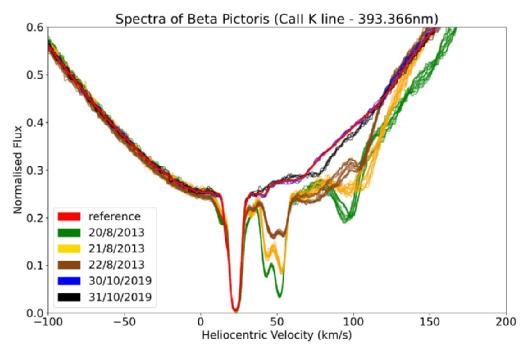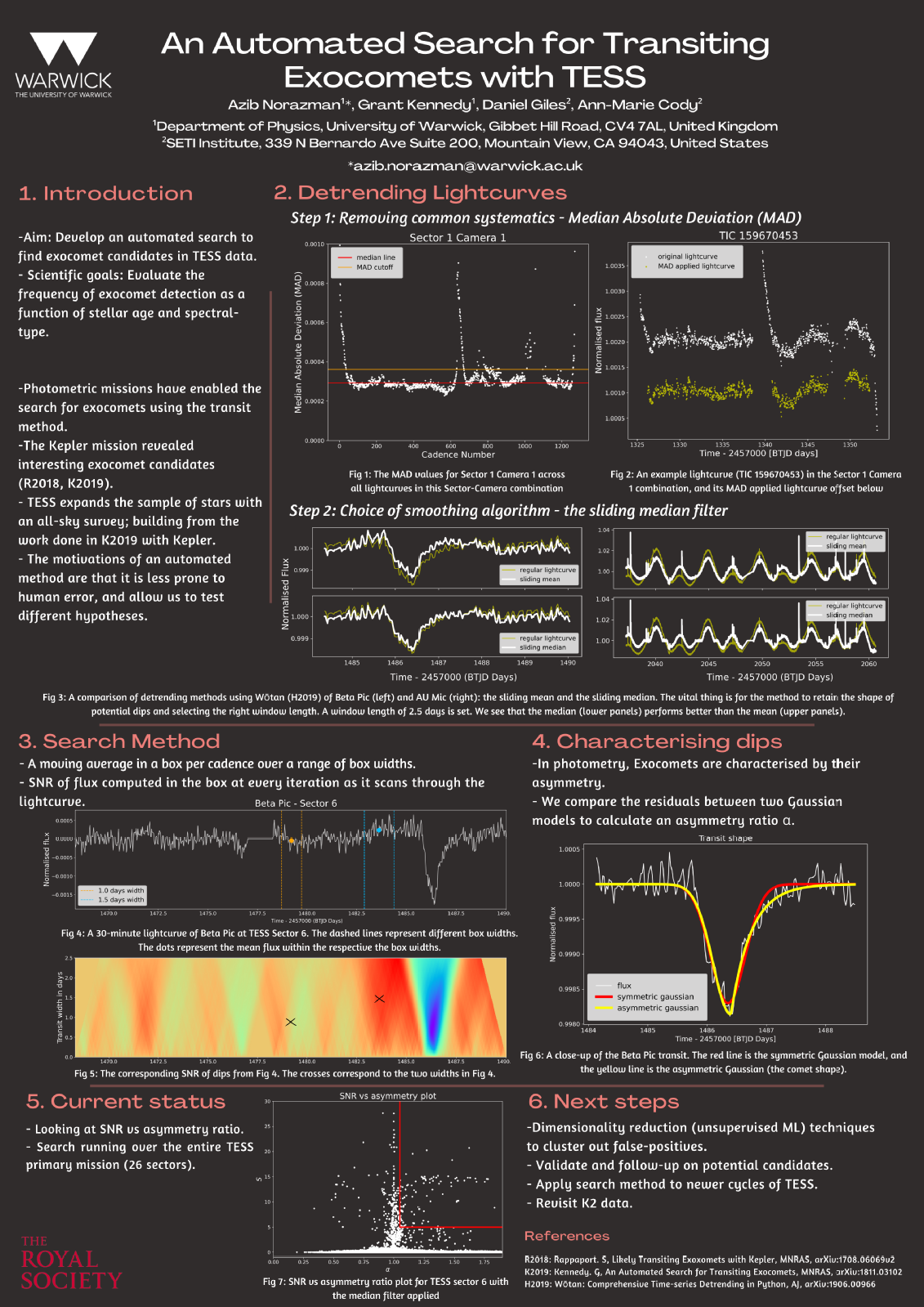Research News & Highlights
UKI Discs Meeting 2024 to be hosted at the University of Warwick
Our discs group recently started the UK & Ireland (UKI) Discs community, where we aim to bring together the disc communities across the UK & Ireland for those working on astrophysical discs on various scales, from circumplanetary to galactic discs. We are excited to announce the first UKI Discs Meeting will be hosted at the University of Warwick from the 9th - 11th of September 2024 and will focus on protoplanetary discs and debris discs (including white dwarf discs). To register and find out more, follow the link hereLink opens in a new window.
The abstract submission deadline for talks/posters is the 12th of May 2024.

Debris Discs: Home and Abroad 2022
Raphael Bendahan-West -- Automated Search for Spectroscopic Exocomet Transits

Exocomets are analogues of solar system comets, with the main difference being that they orbit stars other than the Sun. These extrasolar comets can be thought of as small icy planetesimals that were left unused during the planet formation phase of a system. Although being “leftover” dust agglomerates, exocomets tend to be part of the most pristine objects in a system, enclosing primordial information about the early phases of planetary formation.
The field of exocomets has been built around the unmatched number of detections made in the circumstellar disc of the archetypal star Beta Pictoris. An exocomet detection is identified by variable absorption features around atomic lines in a stellar spectrum (typically around the ionised Calcium doublet), which can be explained by the interaction between the light emitted by a star and the transiting gas that is in and trailing an exocomet coma. Variability in the CaII doublet has been observed around approximately 30 different stars – certain detections being clearer than others, emphasising the rarity and difficulty to observe such events.
In this talk, I will show results from an automated search through the HARPS archive for signs of exocomet transits. Such a spectroscopic survey is unprecedented mainly due to the large quantity and wide variety of stars being observed. This talk will introduce our newly developed automated search algorithm that quantifies the rate of CaII exocomet absorption events in archival spectra, with the goal to estimate the occurrence rate of transiting exocomets.
Azib Norazman -- An Automated Search for Transiting Exocomets with TESS

The term exocomets refers to analogues of our Solar System comets. They are small icy planetesimal bodies that orbit stars other than the Sun and are thought to be the remnants of exoplanet formation. In recent years, there have been a small number of stars that have unique asymmetric dips in their transits from photometric data that cannot be caused by a planet transit. The most prominent example of this so far are from the lightcurves of Beta Pictoris, a young A-type star. Recent literature has also indicated that exocomet detections are more likely in younger, A/F-type stars. As the TESS mission carries out an all-sky survey, there is now the opportunity to explore this hypothesis further and explore the detection rates of exocomets with relation to the spectral type of their host star- uncovering the occurrence rates as a function of spectral type and stellar age. A simple automated method to detect exocomet transits was developed for the Kepler mission. As TESS expands the sample of stars over the whole sky, a plethora of star systems will be explored. However, the nature of the all-sky search results in a wide range of astrophysical variability in addition to the different systematics the spacecraft has compared to Kepler. Therefore, development of the search method for TESS is essential. We present the automated search algorithm used to find potential asymmetric transit dips in TESS, and the results of my search at the time of the conference.
